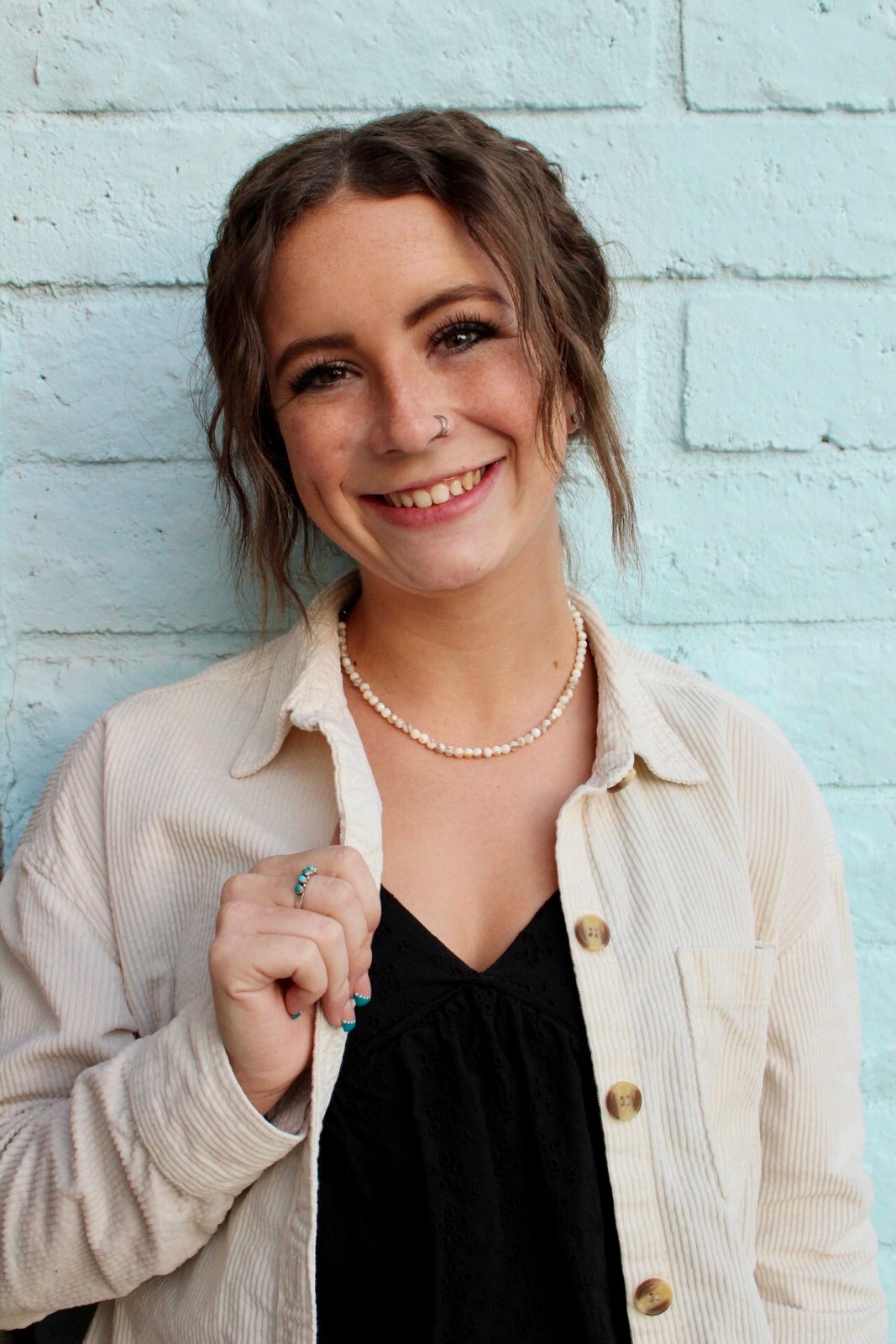We recently connected with Kylier Marshall and have shared our conversation below.
Hi Kylier, thanks for joining us today. How did you learn to do what you do? Knowing what you know now, what could you have done to speed up your learning process? What skills do you think were most essential? What obstacles stood in the way of learning more?
Honestly, I had no idea what I was doing when I first started wood burning. I had seen cool videos and wooden pieces at art shows but never knew the amount of work it would take to achieve the look these artists were producing until I tried it. I first began by burning old scrap pieces of wood to get a feel for the burner. I only had one burner for the longest time which taught me to separate what elements needed to be the darkest shade and thickest in order to be to have the right amount of detail. Each tip creates a different line weight, waiting for the burner to cool to switch out the tip and reheat took a while. Now I have four different burners that I alternate using on a single piece. I also began drawing out my sketches directly on the wood, this did not allow for corrections or adjusting alignments. As time continued, I learned that drawing out the design on trace paper, similar to wax paper, allows me to erase as needed and make sure my artwork matches the contour of the wood slab. To speed up my learning curve I could have watched more videos of artists to learn their tips and tricks, but I believe that’s part of the journey. I have found what makes my process successful. The most essential skill I learned was scaling of detail. I learned that I need to emphasize shadows darker than what I think, not to be afraid to add the smallest line details that might get lost at the first glance. Tiny details help keep the viewers’ attention longer as they begin to discover more detail. Pine trees, flowers and mountains have become my favorite things to incorporate into my artwork. If you look closely each line in the pine tree is a needle, a single hand drawn line and is mirrored down the center of the tree. Flowers allow for intricate line contouring following the shape of each petal and texture of pollen. Mountains are great for shading large silhouettes or the smallest shadow. One obstacle that has stood in my way for the last several years was working full time, volunteering and being a full-time student. I am a recent college graduate which has allowed me to take on more pieces in my small business and continue to work full time.
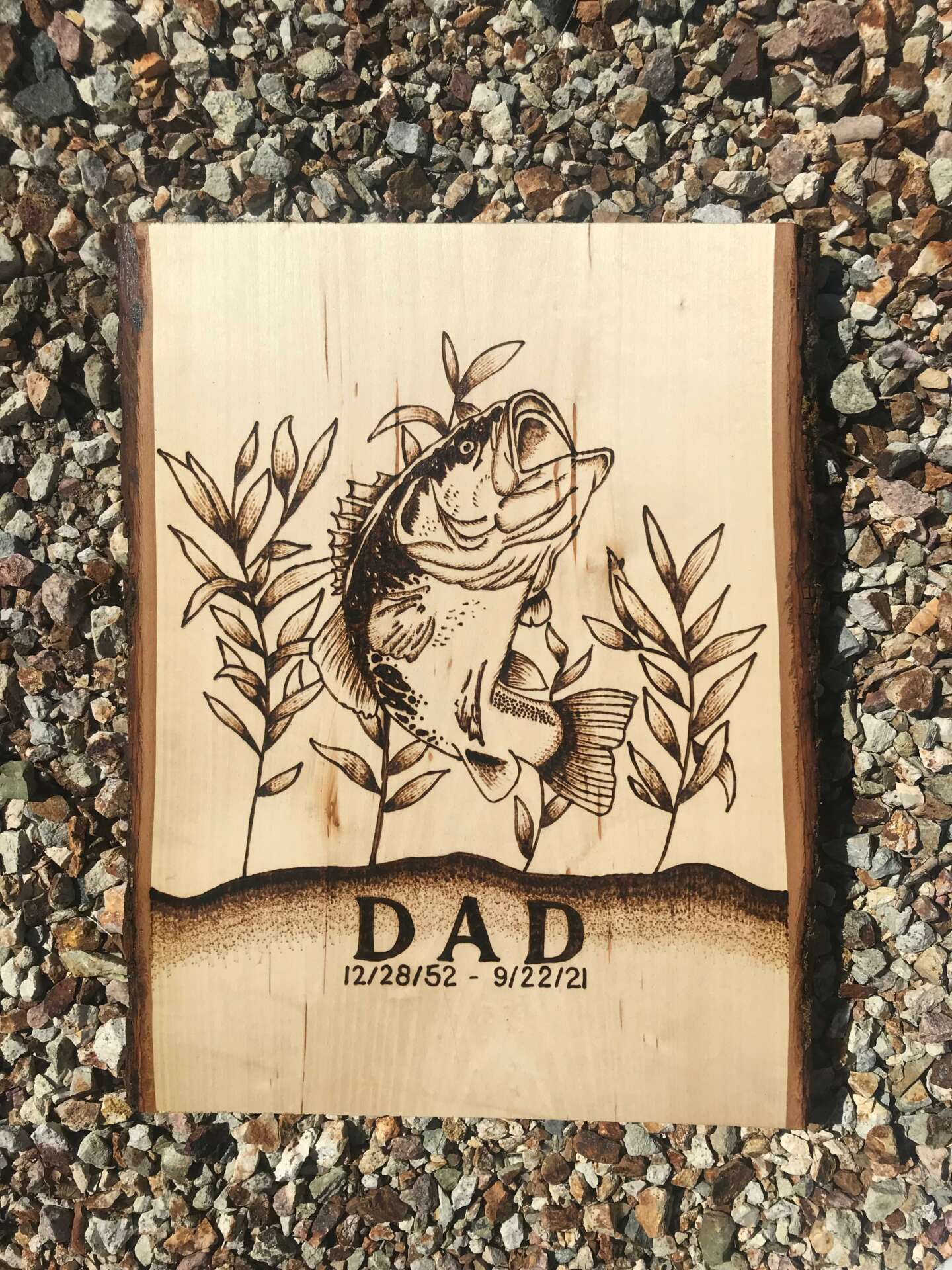
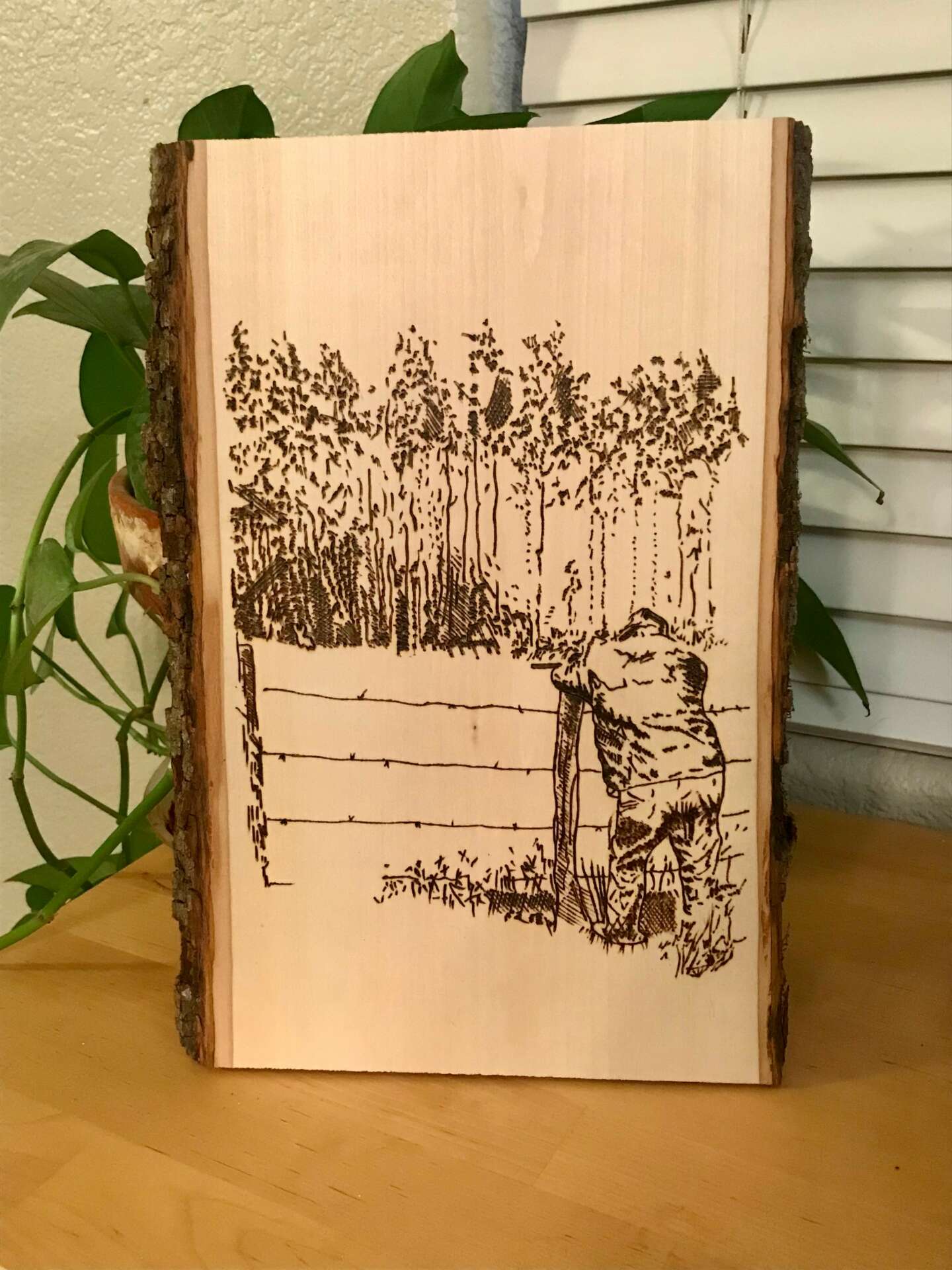
Kylier, love having you share your insights with us. Before we ask you more questions, maybe you can take a moment to introduce yourself to our readers who might have missed our earlier conversations?
My name is Kylier, a small business owner. I had officially started back in 2019. I have always been interested in drawing, crafts, photography, and DIY projects. My family is full of hands-on, creative people. Some of my creativity came naturally and I decided to challenge myself by teaching myself to use different forms of media and took multiple art classes in school up until college. I finished my first wood burning piece senior year of high school and have been doing them ever since! It started out as gifts for friends and family and then was asked by multiple people to do commissioned pieces. After numerous suggestions of starting a small business, I finally began my journey as Desert and Pine Design. The name came from the love of the desert, being a third generation Arizona native, and celebrating my college town in Flagstaff. I am still doing custom pieces and enjoy the peaceful process of watching each one come to life. Each piece is unique, I will never make a duplicate piece. I am running this business entirely on my own from start to finish. I sand down each piece, hand draw every sketch, burn the entire piece, and add a clear coat depending on clients wishes. I also am managing my social media accounts, editing all my pictures and videos. I have a passion for graphic design which has come in handy when creating my business cards and promotional posts. I am very proud of how far I have come and the direction my business and I are headed in.
For you, what’s the most rewarding aspect of being a creative?
As an artist I have the ability to take someone’s ideas and make them come to life. I only do custom pieces, so I take the simplest idea like “desert scene” and turn it into a story. I have also been able to reach people all over the United States including Utah, Colorado, Massachusetts, Ohio, and Georgia. I am a people person, I like working with my clients and making sure my sketch fully captures their ideas, I always ask for approval before burning it onto the wood. Over the last few years, I have been asked to make very sentimental pieces to celebrate new family members, new homes, marriages and loved ones who have passed. I get such joy from watching people unwrap their piece and have seen some clients even tear up. Moments like these make all my hard work and attention to detail worth it.
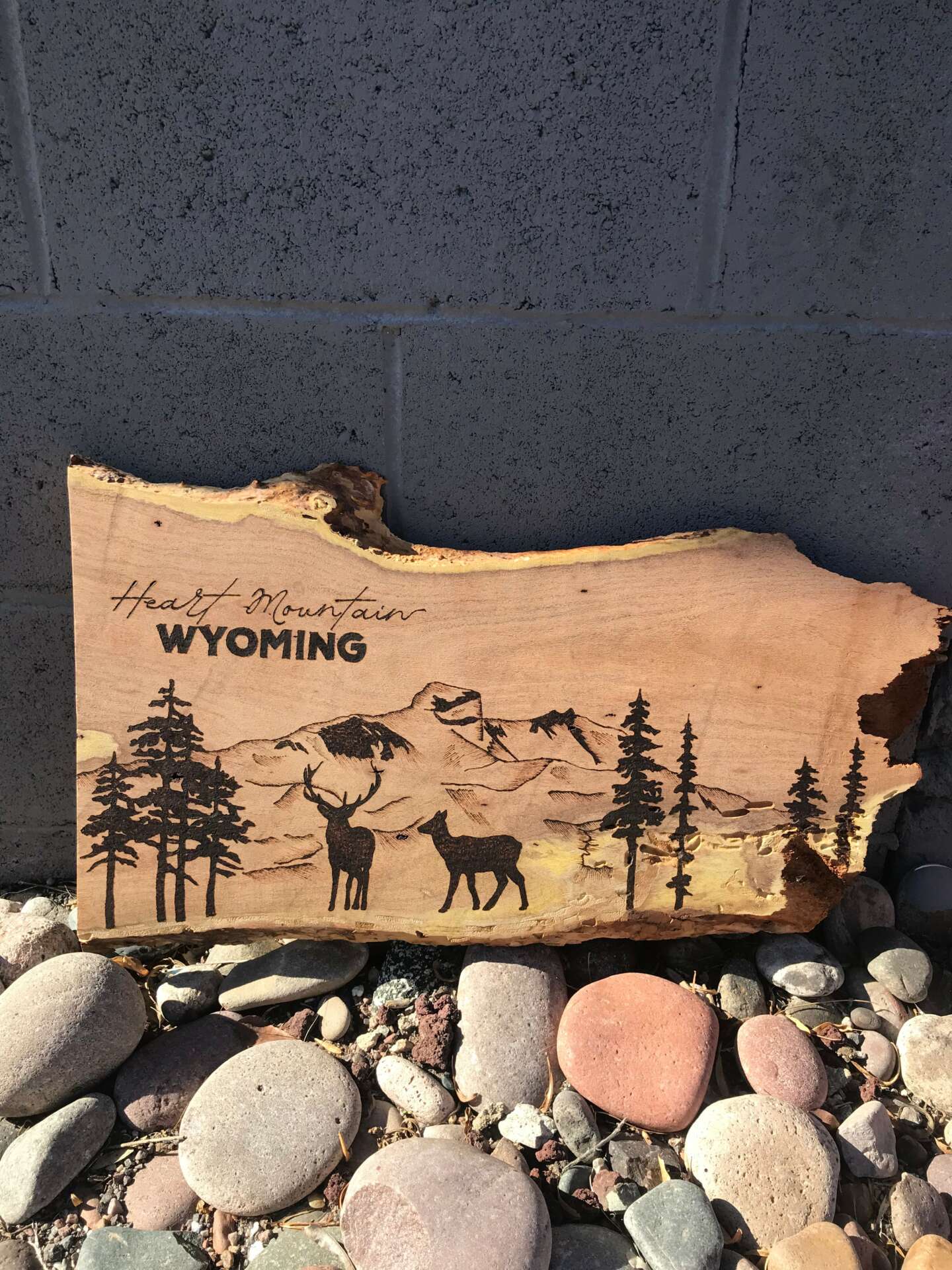
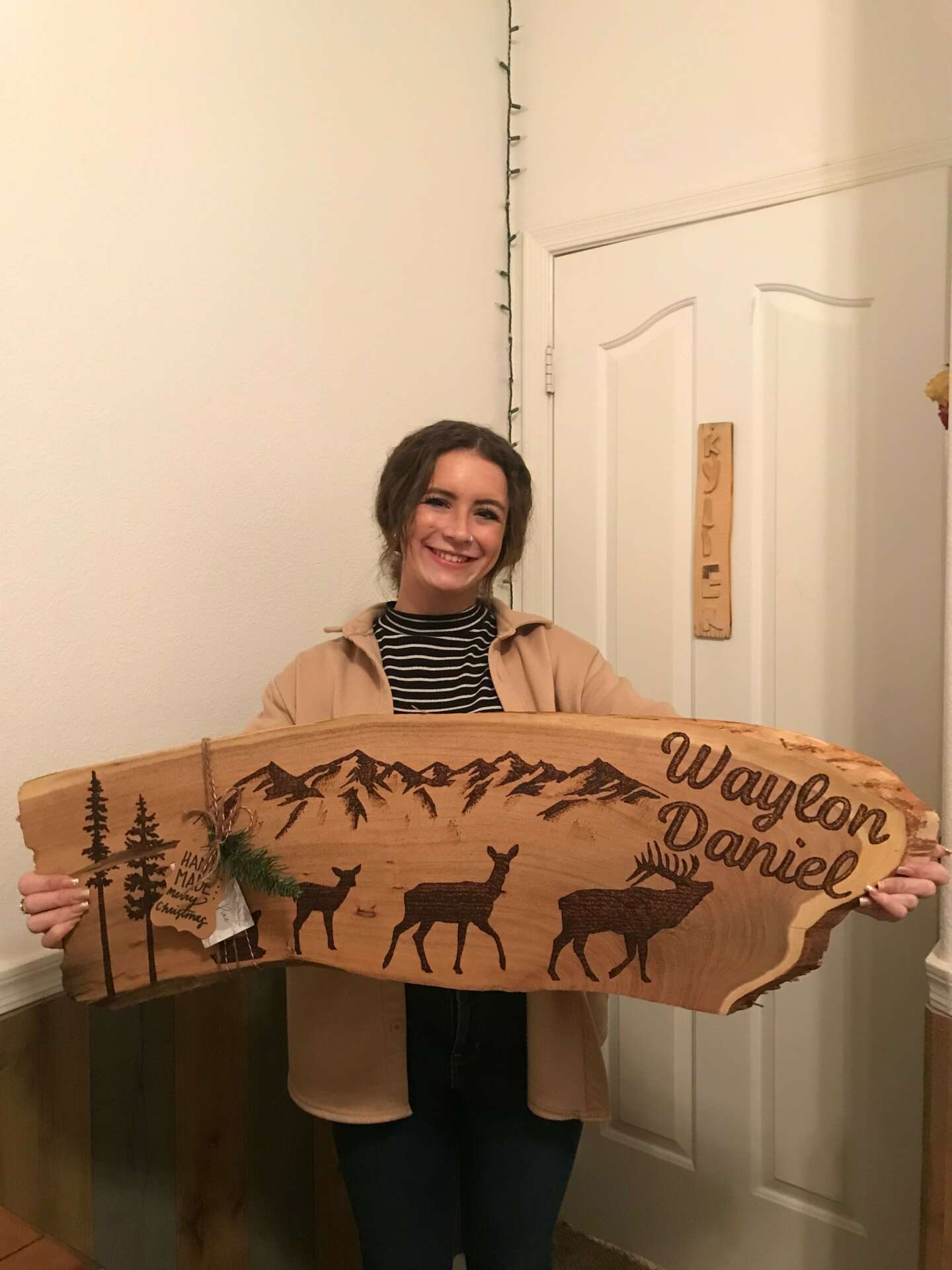
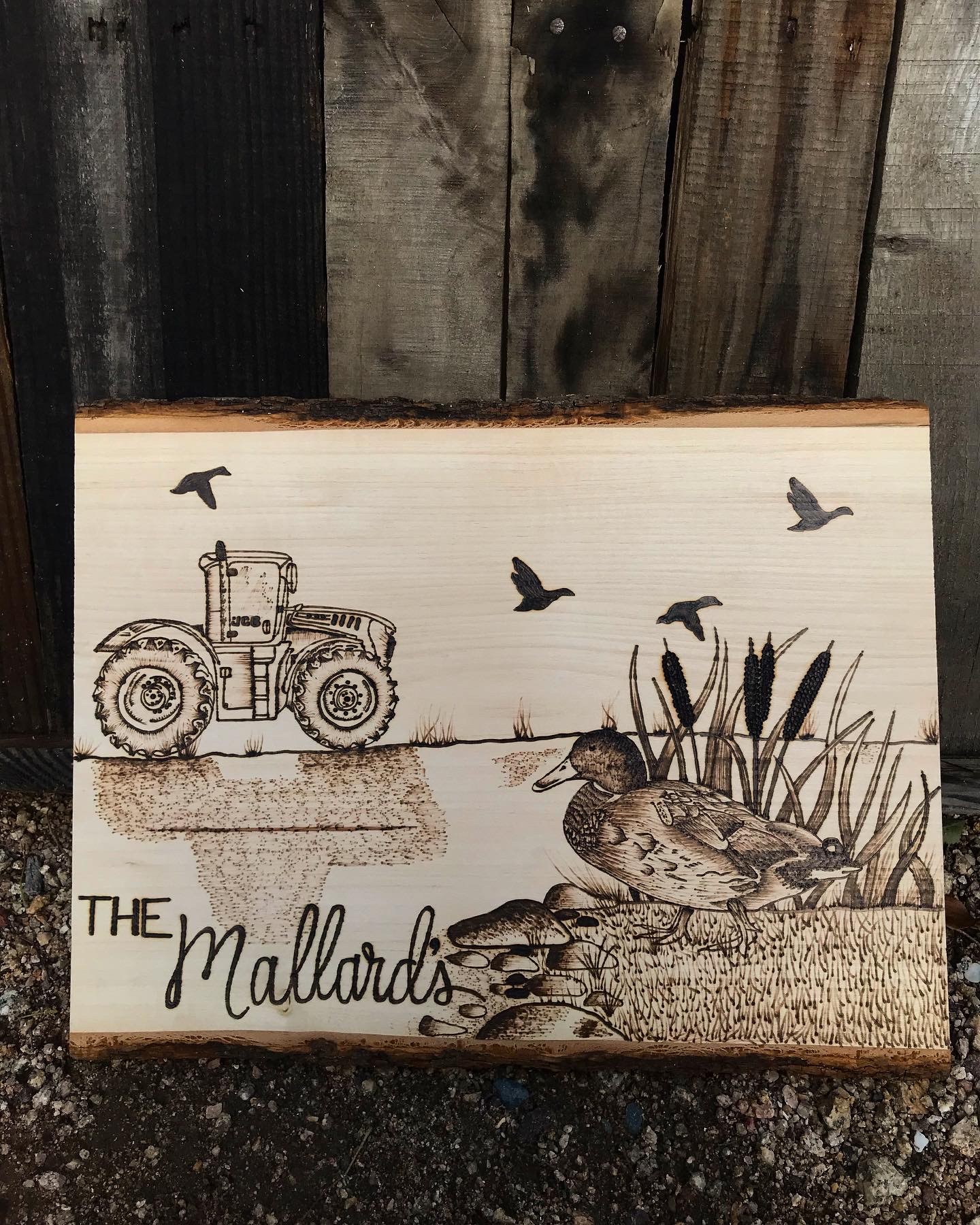
Do you think there is something that non-creatives might struggle to understand about your journey as a creative? Maybe you can shed some light?
I think people struggle to understand that each slab of wood that I work with is different. Mesquite is beautiful but takes about twice the amount of time to burn because it is a very durable hardwood. It is naturally darker than most others wood, as I create my shadows and lines they need to become even darker and more dramatic to be able to be seen. Pine is my most common type of wood, it is much lighter and burns a lot easier since it’s softer. I also have a little more flexibility with the shading, I can go a lot lighter on lines so add more dimension since they will appear better. I have been asked several times if I use stencils and or a laser engraver to complete my work, but I do not. I complete the work by entirely by hand. Some people also do not understand how unforgiving wood is, meaning I cannot undo my mistakes. Once a burn mark is made it is permanent unless I sand off the entirety of the wood piece. Sanding a section scuffs the face of the wood making it appear a different color than the rest of the slab.
Contact Info:
- Instagram: desert_and_pine_design


